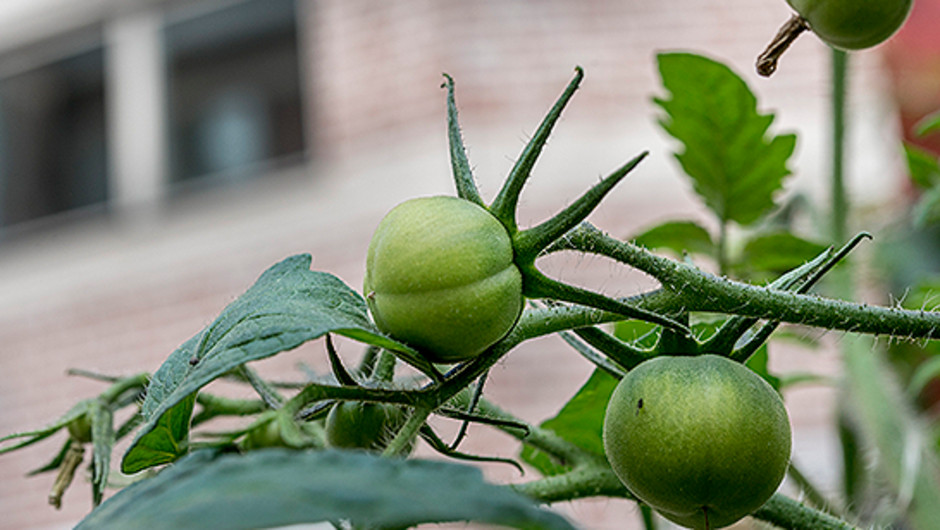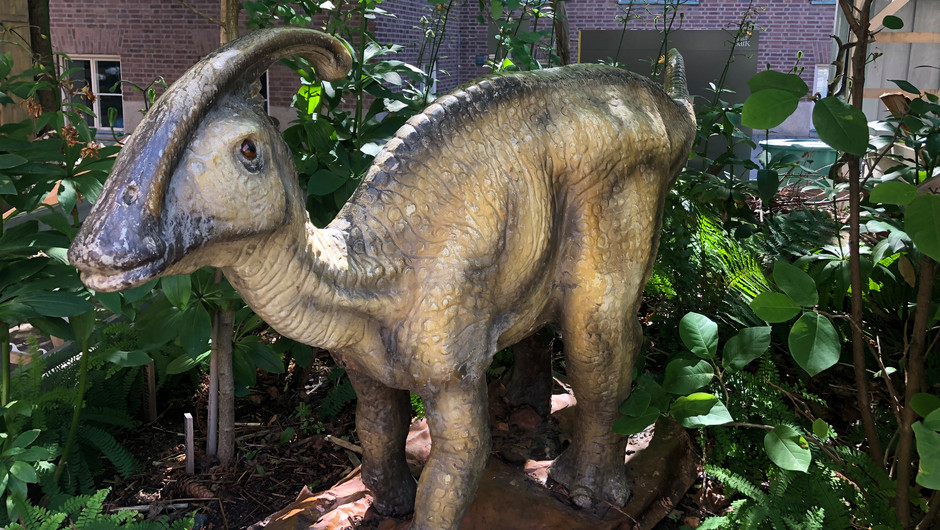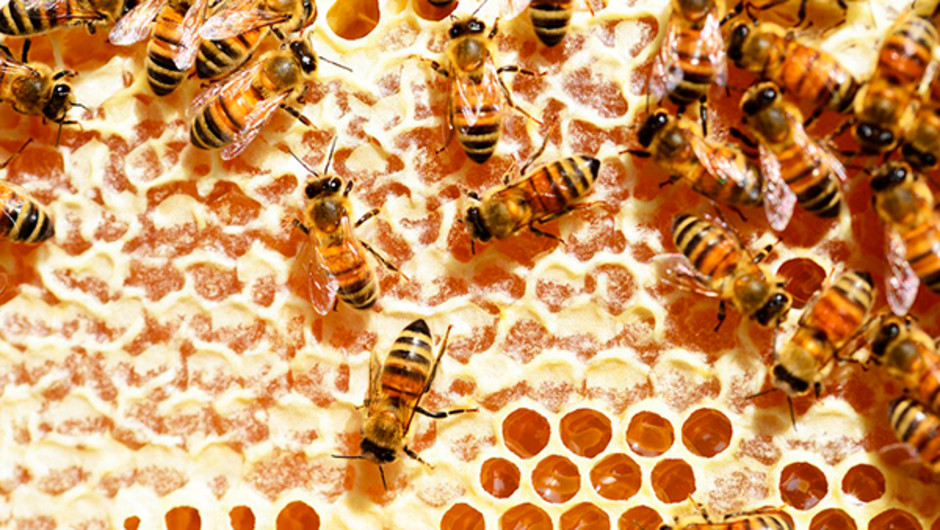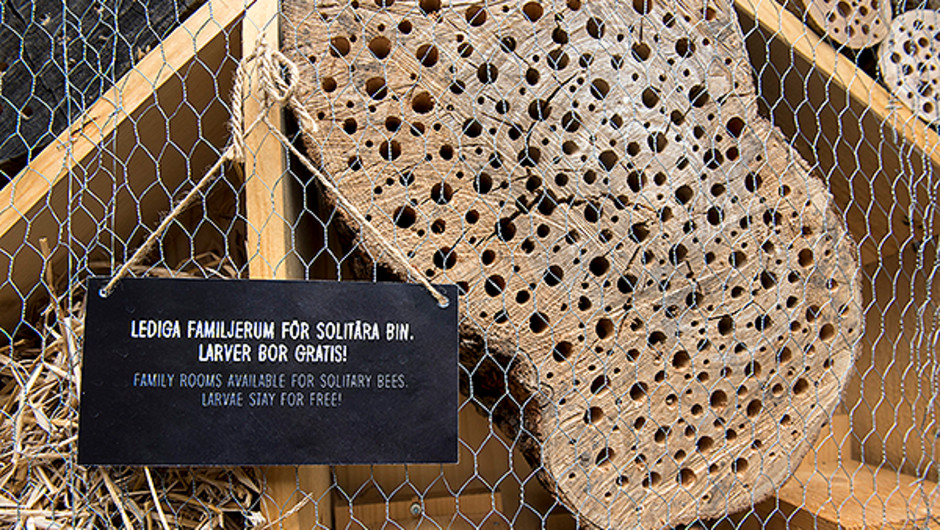Experience the museum's green courtyard!
On the museum's green courtyard, you can enjoy urban farming and be inspired for your own cultivation. You can also explore nature in the city through play and discovery.
Here's what you could experience this season:
- An insect hotel helping to address the housing shortage for insects in the city.
- Honeybees working in the beehive (after midsummer)
- Learning to dance like a honeybee on our bee dance floor.
- Petting Sarri and Parre in the museum's dino garden.
- Logs for natural play and learning about nature.
- Peeking into a decaying log.
- Getting inspired to create a wildflower meadow.
Urban cultivation
In Grow the City there is city garden with four different plant beds and a balcony garden.
The inspiration for the cultivation comes from agroforestry, "forest garden cultivation", where you cultivate with nature and want to imitate how a forest works. A forest is its own functioning cycle, and a forest garden cultivation also strives to be. The goal is a cultivation where you mostly harvest.
All plants have one or more functions in a forest garden. Most are edible, some plants nourish the soil, others are pest control or good for bees and other pollinators.
The soil in a forest garden is covered with, for example, straw, leaves or grass. This is to protect the soil from dehydration, to stop weeds from growing and to provide nutrition and good structure to the soil when the when the plant parts are degraded. The soil is not turned, because you do not want to disturb the interaction between plants and fungi, mycorrhiza, where the fungi form extra roots for the plants and the plants give sugar to the fungi.

Dino garden
In the dino garden you can visit the dinosaur cubs Parre and Sarri, which are our duck-billed dinosaurs of the genus Parasaurolophus.
In the dino garden there are "living fossils", or close relatives of plants that were common during the time of the dinosaurs. Ginkgo, magnolia, mini mountain pines, crawling lilies, calluses and ferns grow here.
During this time, the first flowers, and the first bees and butterflies, evolved, moving pollen between flowers in exchange for sweet nectar. Many, many flowering plants developed thanks to the cooperation with insects. Today, almost all plants have flowers!

Bee hive
Watch as honey bees work in the hive.

Insect hotel
In the city, it can be difficult for insects to find places to live, lay eggs, take refuge, or hibernate. Therefore, we have built an Insect hotel - and we hope some little guests will choose to creep inside.
We also want to attract insects to our urban garden, because they help to improve the harvest by pollinating plants and by combating pests such as aphids.
Can you see if anyone has moved in?

Dead wood - full of life!
Did you know that dead wood is full of life? Many organisms, such as fungi and insects, live inside old trees and logs. A dead spruce lying on the forest floor can be home to up to 350 species of beetles and 200 species of fungi!
Unfortunately, these days there is too little dead wood. This means that many species that depend on it are becoming rarer.
Needless to say, there isn’t much dead wood in the urban environment. What if the city had more logs? For bugs and fungi? For curious little humans who like to climb?

Available: Permanent exhibition
Hours:
| Weekday | Hours |
|---|---|
| Monday: | |
| Tuesday: | 11:00 |
| Wednesday: | 11:00 |
| Thursday: | 11:00 |
| Friday: | 11:00 |
| Saturday: | 10:00 |
| Sunday: | 10:00 |
Price: Included in the entrance ticket

